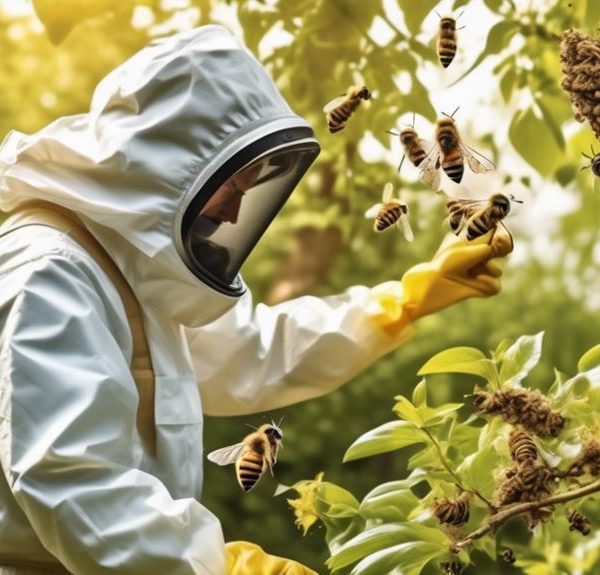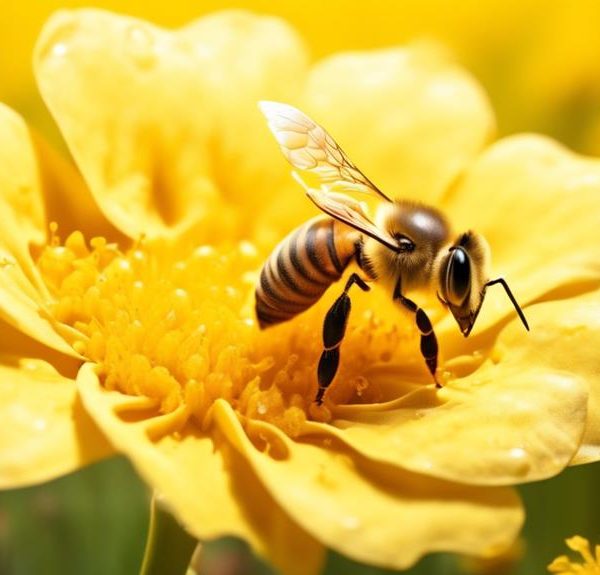Solve the mystery of your beeswax candle's tunneling issue and discover how to prevent this wasteful occurrence.
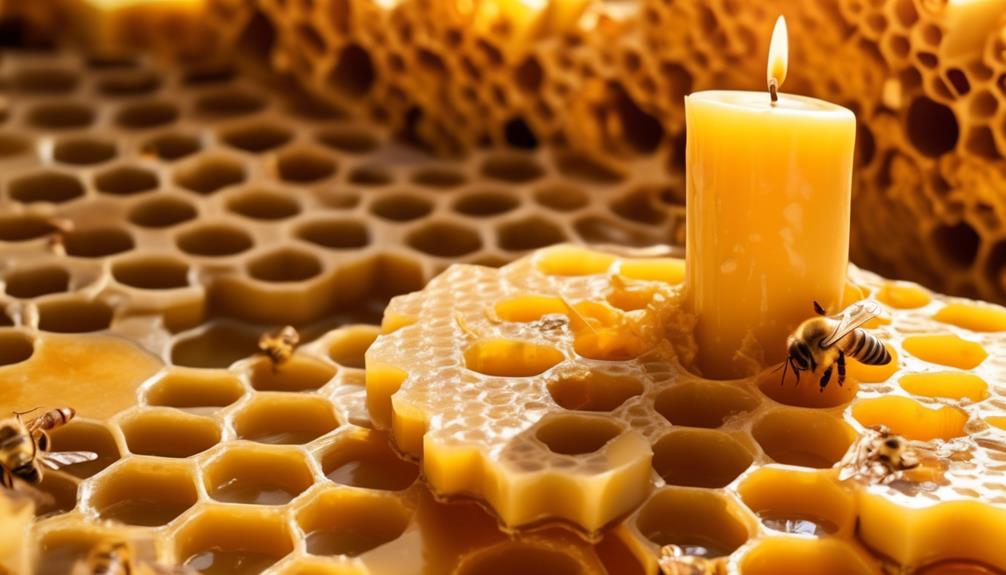
Why Is My Beeswax Candle Tunneling?
You light your beeswax candle and see the flame dance. You anticipate a serene evening ahead.
However, as time passes, you notice something odd. Your candle seems to be tunneling. Instead of a smooth, even burn, a deep hole is forming in the center, leaving the edges untouched.
It's not just an aesthetic issue; it's also a waste of your precious beeswax. So, why does this happen? And more importantly, what can you do to prevent it?
Stay tuned as we unravel this waxy mystery together.
Key Takeaways
- Tunneling in beeswax candles occurs when the wick isn't generating enough heat to melt the surrounding wax.
- Burning the candle for a sufficient amount of time and trimming the wick to the correct length can prevent tunneling.
- Drafts and air vents can cause uneven burning and tunneling, so it's important to keep the candle in a draft-free area.
- Tunneling drastically reduces the lifespan of a beeswax candle, wasting unburned wax and shortening the burn time.
Understanding Beeswax Candle Tunneling
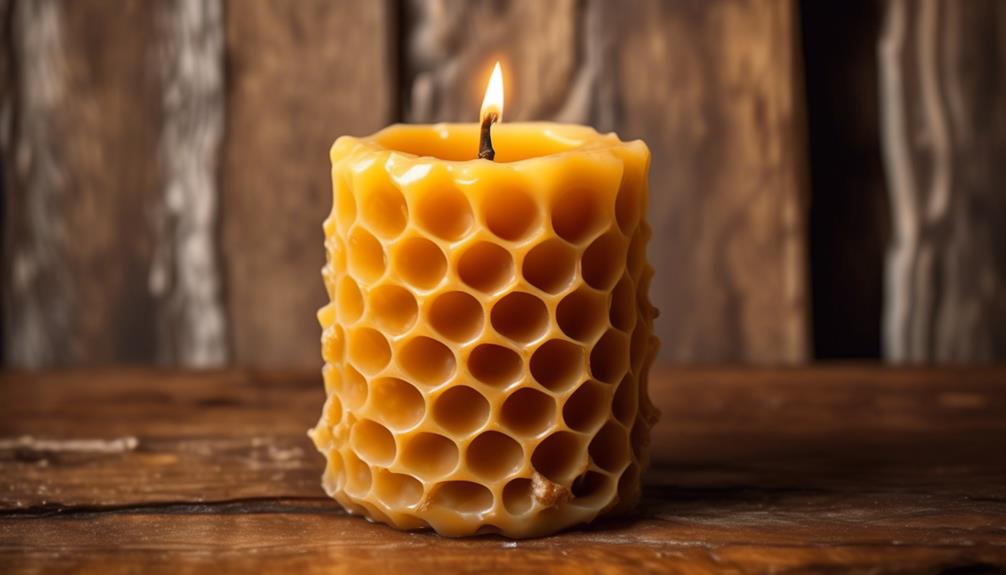
Almost all beeswax candle enthusiasts have experienced tunneling at some point, a frustrating issue where the candle burns down its center, leaving a ring of untouched wax around the edges. It's a common problem, but understanding why it happens can help you prevent it.
Tunneling occurs when the candle's wick isn't burning hot enough to melt all the wax around it. Instead of consuming the entire surface of the candle, the flame digs a tunnel down the middle. This isn't just an aesthetic issue—it's also a waste of your beloved beeswax.
The size of the wick and the temperature at which it burns are key factors. If a wick is too small or not made of the right material, it won't generate enough heat. Likewise, if the wax is too hard, it won't melt easily.
Another contributing factor is how long you burn your candle each time. If you don't let it burn long enough to melt the entire top layer of wax, you're setting yourself up for tunneling. So next time you light up your favorite beeswax candle, ensure it burns evenly to maximize your enjoyment.
Common Causes of Candle Tunneling
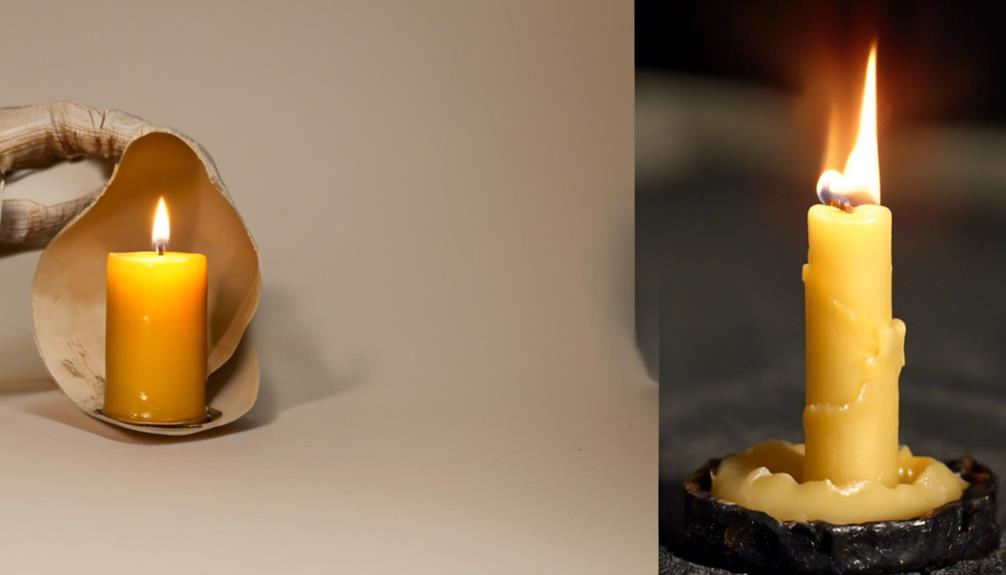
Expanding on this, let's explore the most frequent causes that lead to candle tunneling.
Primarily, you may notice tunneling when you don't burn your candle long enough. It's a rule of thumb that for every inch of a candle's diameter, you should burn it for an hour. This allows the wax to melt evenly across the surface, preventing a tunnel from forming.
Another likely culprit is the use of a too-small wick. A wick that's not big enough can't create a large enough pool of molten wax, resulting in tunneling. Also, if you're trimming your wick too short, it might cause the same problem. A wick's recommended length is around 1/4 inch.
Lastly, drafts can lead to tunneling. If your candle is in a draughty area, the flame will lean towards the draft, causing uneven melting and a tunnel to form. You can avoid this by keeping your candle out of draughty areas or using a wind guard.
Understanding these common causes will help you prevent tunneling in your beeswax candles, providing a longer, more enjoyable burning experience.
Impact on Candle's Lifespan
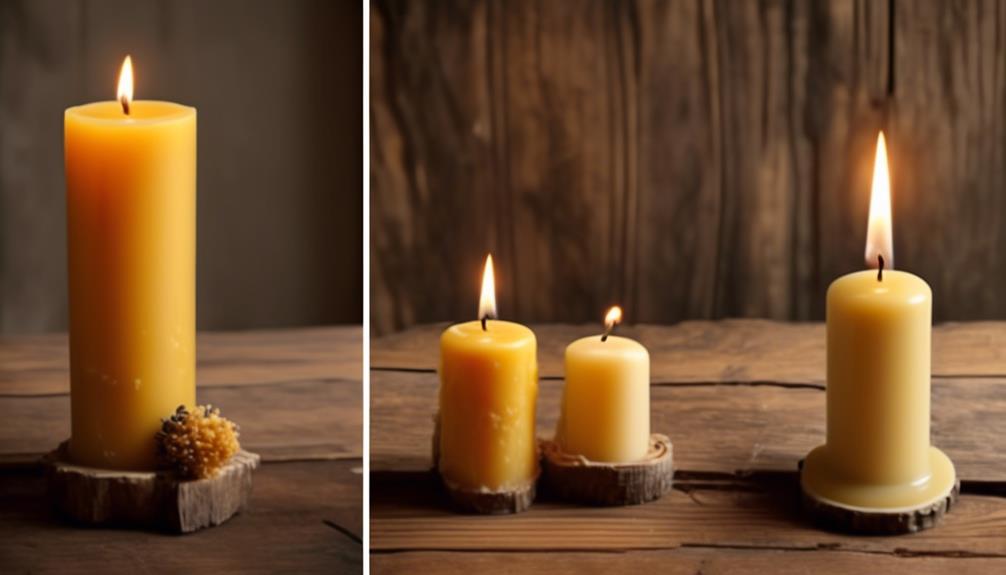
So, how does tunneling affect your candle's lifespan? Well, tunneling drastically reduces it. When your candle tunnels, it's not burning all the wax. Instead, it's only burning a narrow path down the center, leaving a ring of hard, unburned wax around the edges. This unburned wax is wasted each time you light your candle, shortening its overall lifespan.
You've probably noticed that tunneling accelerates as the candle burns deeper. This is because the heat gets trapped within the tunnel, causing the wax to melt faster and the wick to burn more quickly. As a result, a tunneled candle can burn out in a fraction of the time it should normally last.
To put it in perspective, a well-made beeswax candle that's burned properly can last up to twice as long as a tunneled one. That's quite a difference! It's not just about the money you've spent on the candle—it's also about the ambiance and enjoyment you miss out on when your candle burns out prematurely.
Prevention of Beeswax Candle Tunneling
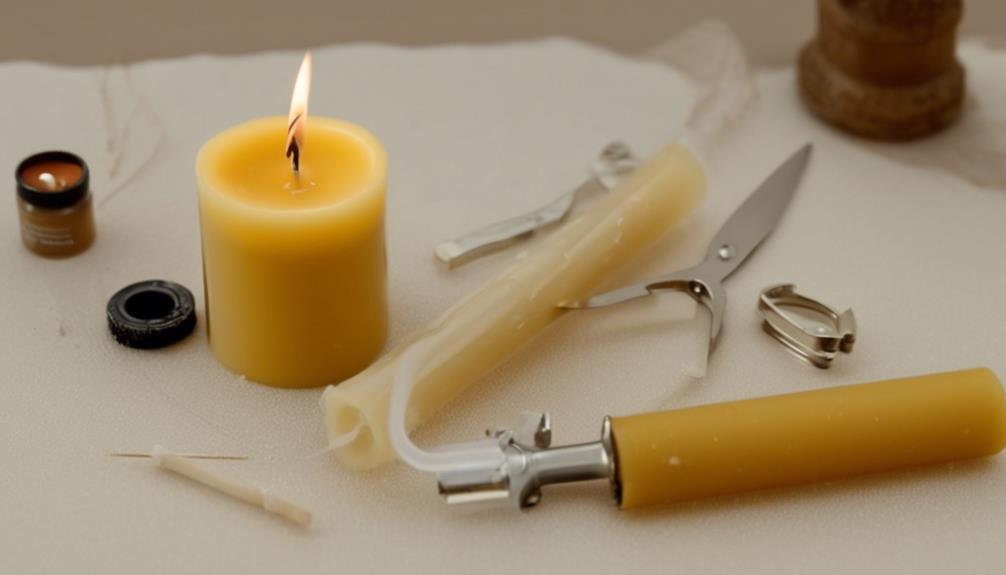
Given the significant impact tunneling can have on your beeswax candle's lifespan, it's crucial to know how to prevent this from happening in the first place. The first rule of thumb is to allow your candle to burn long enough for the entire top layer of wax to liquify each time you light it. This ‘melt pool' ensures that all the wax is utilized and decreases the likelihood of tunneling.
It's also crucial to trim your wick to 1/4 inch before each burn. Long wicks can cause a high flame that melts wax unevenly, leading to tunneling.
Avoid placing your candle in drafty areas or near air vents. Airflow can cause the flame to flicker and burn unevenly, leading to tunneling.
Lastly, consider investing in a candle warmer if tunneling persists. This device gently heats the entire surface of your candle, ensuring even melting and preventing tunneling.
Solutions for Tunneling Beeswax Candles
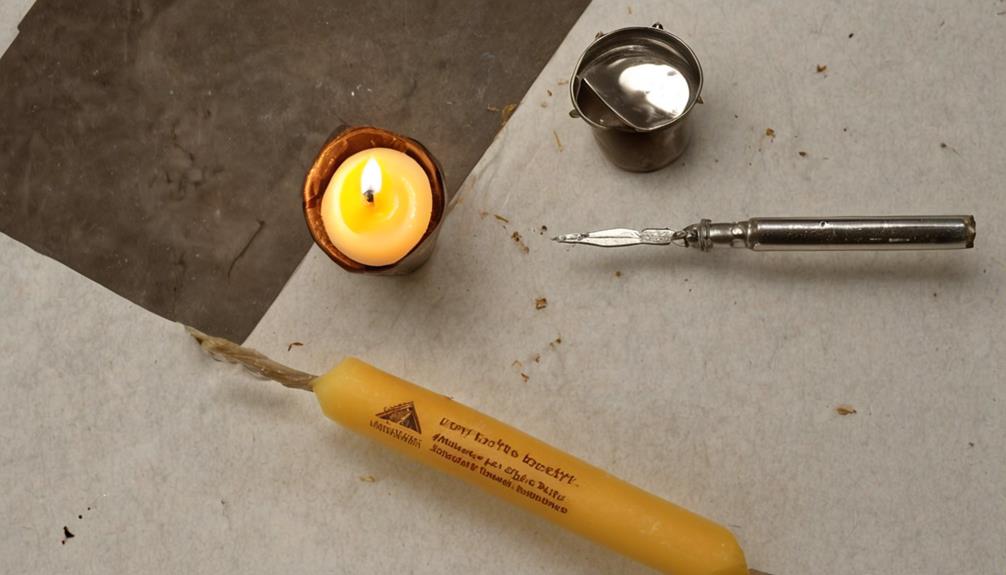
If you're dealing with a tunneling beeswax candle, don't fret; there are several effective ways to rectify the issue and restore your candle's full potential.
The first step is to remove the excess wax around the wick. Use a butter knife or a spoon to gently scrape away the wax, creating a level surface. This will allow the candle to burn uniformly and help prevent further tunneling.
Next, you'll want to 'hug' your candle. This involves gently pushing the soft outer wax towards the wick, which helps to melt the wax evenly.
Additionally, ensure that you're burning your candle for the right amount of time. Beeswax candles should be left to burn for three to four hours at a time, but no longer. This allows the wax pool to reach the edges of the candle, avoiding tunneling.
Frequently Asked Questions
What Are the Potential Health Benefits of Using Beeswax Candles Instead of Other Types of Candles?"
When you choose beeswax candles over other types, you're opting for a healthier alternative. They're natural and non-toxic, emitting negative ions that can purify, cleanse, and improve air quality. People with allergies, sinus problems, and asthma have reported significant improvement in their symptoms.
Furthermore, beeswax candles burn slower and drip less, providing you with a cleaner and longer-lasting light source. So, you're not only promoting good health, but also getting more value for your money.
Can Beeswax Candles Trigger Allergies or Asthma?"
Yes, beeswax candles can potentially trigger allergies or asthma in some people. You're exposed to small amounts of pollen and propolis when you burn these candles. If you're sensitive to these substances, it could exacerbate your symptoms.
It's important to know your allergies and how you react to different substances before introducing new items, like beeswax candles, into your environment. Consult your doctor if you're unsure.
How Can I Safely Store My Beeswax Candles to Prevent Damage or Deformation?"
To store your beeswax candles safely and prevent damage, you'll need a cool, dry place. Avoid direct sunlight and heat sources, as they can warp the shape. Don't store them in plastic, it can cause 'sweating'.
If they're scented, keep them separate to prevent fragrances mixing. Lastly, if you've got pillar candles, store them upright to maintain their shape.
Are There Any Specific Types of Wicks That Are Best for Beeswax Candles to Avoid Tunneling?"
Yes, there are.
It's essential to use the right wick for beeswax candles to avoid tunneling. Square braided cotton wicks work best. They're designed specifically for beeswax, as they burn hotter and help the wax melt evenly.
You'll need to match the wick size to the candle diameter, though. Larger candles require thicker wicks. Experimenting with different sizes can help you find the perfect fit for your candle.
Does the Color or Scent of a Beeswax Candle Have Any Impact on Its Tendency to Tunnel?"
No, the color or scent of your beeswax candle doesn't directly influence its tendency to tunnel. Tunneling's more about the wick's size and the way you burn your candle.
If you're experiencing tunneling, it's likely because you're not letting your candle burn long enough each time, or the wick is too small.
Conclusion
So, there you have it. Your beeswax candle is tunneling due to incorrect burning practices or environmental issues. This not only shortens your candle's lifespan but can also diminish its overall performance.
But don't worry, you can prevent tunneling or fix it if it's already happened. Now, armed with this knowledge, you're ready to enjoy your beeswax candles to their fullest, ensuring they burn evenly and beautifully every time.

